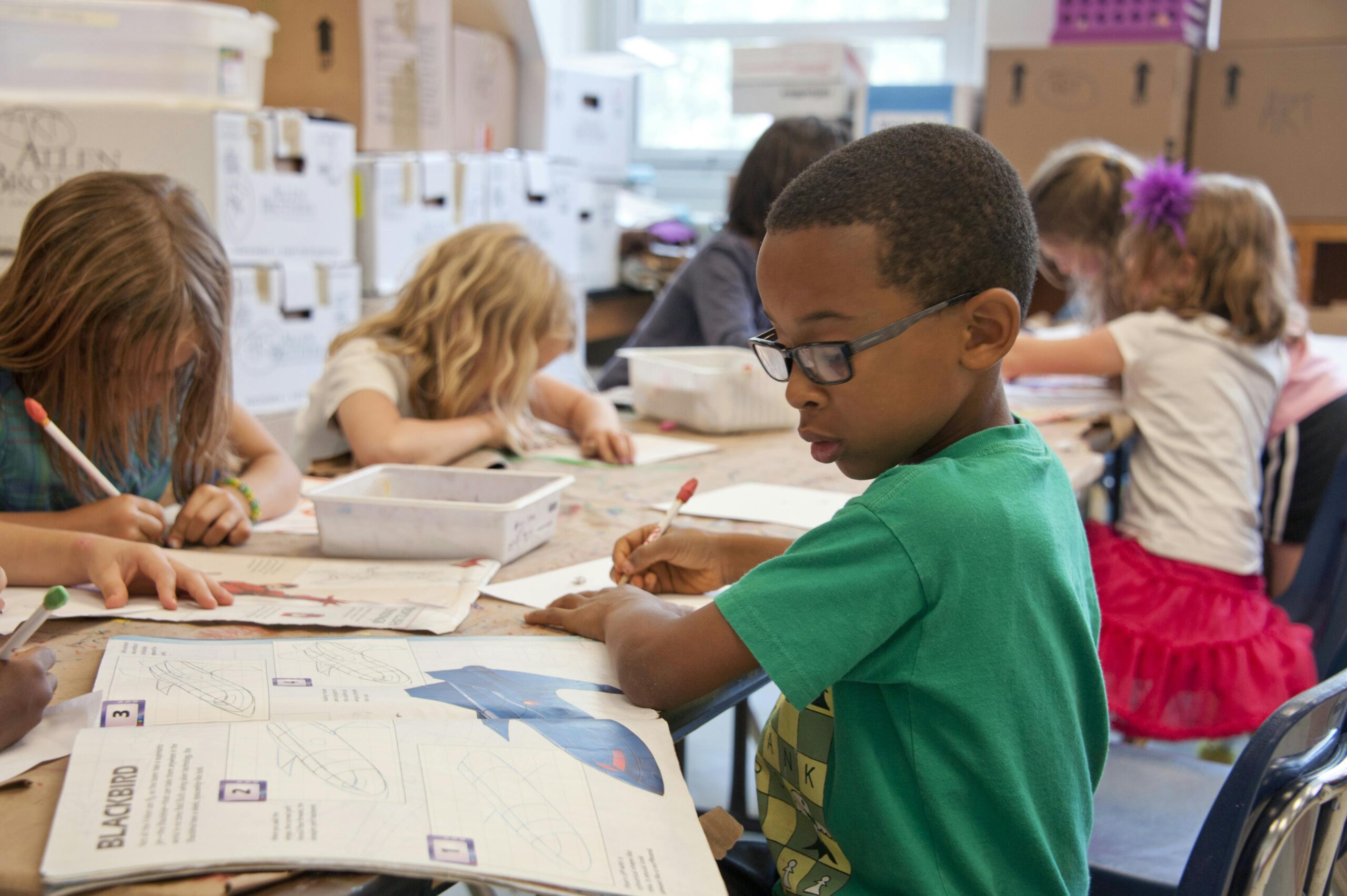Classroom management is often one of the most challenging aspects of teaching, especially for new educators. Managing a group of diverse students, each with their own unique needs, learning styles, and personalities, can be overwhelming at first. Yet, it’s one of the most important skills any teacher can develop. A well-managed classroom fosters an environment where students feel safe, respected, and motivated to learn, while a poorly managed one can lead to chaos, disengagement, and even burnout for teachers.
For new teachers, learning how to balance effective discipline with fostering positive relationships can feel like a steep learning curve. Fortunately, there are key strategies that can help new educators not only maintain control of their classrooms but also create a positive, engaging learning environment that benefits both students and teachers. In this article, we’ll explore effective classroom management techniques for new teachers, breaking them down into clear, actionable strategies.
1. Set Clear Expectations from the Start
One of the most important elements of classroom management is setting clear, consistent expectations right from the beginning of the school year. Without clear guidelines, students may struggle to understand what is expected of them, leading to confusion, misunderstandings, and disruptive behavior.
How to Set Expectations:
- Create Classroom Rules Together: At the start of the year, involve your students in creating a list of classroom rules. When students participate in the rule-making process, they are more likely to take ownership of them. This could be done through a class discussion about respect, responsibility, and what makes the classroom a safe learning space.
- Be Clear and Concise: Make sure the rules are simple, clear, and easy to understand. For example, “Respect others,” “Listen when someone is speaking,” and “Keep hands, feet, and objects to yourself” are all clear and actionable.
- Model Behavior: Show students what the rules look like in action. If “raise your hand to speak” is one of your rules, model how to raise your hand in a calm and respectful way.
Why It Works: Clear expectations reduce ambiguity, allowing students to know exactly what behaviors are acceptable and what will not be tolerated. They also give teachers the framework to address problems when they arise, as you can point to the established rules when enforcing discipline.
2. Develop Positive Relationships with Students
Effective classroom management is not just about rules and consequences; it’s also about building strong, positive relationships with your students. Students are more likely to respect a teacher they feel understands and cares about them. Building rapport fosters mutual respect, which creates an atmosphere where students are more willing to listen and follow directions.
How to Build Positive Relationships:
- Get to Know Your Students: Take time to learn about your students’ interests, strengths, and challenges. Use the first few days or weeks of school to have one-on-one conversations, or implement ice-breaker activities that allow you to connect on a personal level.
- Show Genuine Interest: Show interest in what students enjoy doing outside of class—whether it’s a hobby, a favorite sport, or a TV show. Building these personal connections lets students know you care about them as individuals.
- Use Positive Reinforcement: Acknowledge students’ positive behaviors, such as staying on task, helping a peer, or contributing to class discussions. Use verbal praise, positive notes home, or even small rewards to reinforce desirable behavior.
Why It Works: When students feel respected and valued, they are more likely to behave respectfully in return. Positive relationships help reduce disruptions and create an emotionally safe space where students feel comfortable making mistakes and engaging in learning.
3. Establish Routines and Consistency
Students thrive in environments where there is a sense of routine. Predictability helps students feel secure and reduces anxiety, which can lead to fewer behavioral issues. As a new teacher, establishing clear routines from the start and sticking to them can make a significant difference in classroom management.
How to Establish Routines:
- Begin with a Structured Morning Routine: Starting each day with a predictable routine can set the tone for the rest of the day. This could include things like taking attendance, handing out materials, or starting with a brief warm-up activity.
- Transition Between Activities Smoothly: Develop routines for transitioning from one activity to another, whether it’s moving from a lecture to group work, or switching from one subject to another. Clear signals (e.g., a bell, a specific phrase) or visual cues can help manage these transitions smoothly.
- Reinforce Routines Regularly: Especially in the early weeks of school, remind students of the daily procedures, expectations, and routines. Over time, they’ll become second nature.
Why It Works: When students know what to expect, they are less likely to act out. Consistency is key—whether it’s how you start the day, transition between activities, or enforce classroom rules. Students appreciate a predictable environment, which helps minimize anxiety and confusion.
4. Use Proactive Strategies to Prevent Disruptions
Prevention is always better than dealing with disruptions after they’ve occurred. As a new teacher, you’ll want to employ strategies that prevent disruptions before they arise. This involves keeping students engaged, minimizing downtime, and addressing potential behavioral issues early.
How to Prevent Disruptions:
- Keep Students Engaged: Boredom is a major contributor to classroom disruptions. Make sure your lessons are interactive and varied. Use different teaching strategies like group work, hands-on activities, or discussions to keep students actively involved in learning.
- Establish Non-Verbal Cues: Sometimes, the most effective way to handle disruptions is quietly and without drawing too much attention. Develop non-verbal cues (such as raising your hand, giving a “look,” or using a hand signal) to gently redirect students without interrupting the flow of the lesson.
- Circulate the Classroom: Walk around the classroom during independent work or group activities. Proximity can often deter misbehavior, and it allows you to keep an eye on students who may need extra help or attention.
Why It Works: Proactive strategies reduce the likelihood of disruptions in the first place. Keeping students engaged and attentive minimizes off-task behavior, while non-verbal cues and classroom movement allow you to address small issues before they escalate.
5. Be Fair, Firm, and Consistent with Discipline
Inevitably, there will be times when students test the boundaries, and you’ll need to enforce consequences for misbehavior. For new teachers, one of the most challenging aspects of classroom management is figuring out how to implement fair and consistent discipline that doesn’t come across as too harsh or too lenient.
How to Implement Effective Discipline:
- Be Consistent: Apply your classroom rules and consequences consistently. If you let certain behaviors slide one day and then address them harshly the next, students will be confused and less likely to follow your rules.
- Be Fair and Impartial: Treat all students equitably. Avoid showing favoritism, and ensure that discipline is applied fairly, regardless of a student’s academic performance or behavior history.
- Use Logical Consequences: Instead of punishing students, try using logical consequences that are directly related to their behavior. For example, if a student disrupts the class, a consequence could be a short time-out or a loss of privilege, such as participating in a fun activity. Make sure consequences are immediate and clear.
- Stay Calm: When enforcing discipline, always stay calm and composed. Reacting with anger or frustration can escalate the situation and undermine your authority. Instead, use a calm, firm voice and body language to convey your expectations.
Why It Works: Consistent and fair discipline helps students understand the boundaries and the consequences of their actions. When students know what to expect, they are more likely to adhere to the rules, which leads to a calmer, more focused classroom environment.
6. Develop Self-Reflection and Adaptability
As a new teacher, it’s crucial to recognize that classroom management is a dynamic skill that will continue to evolve as you gain experience. Reflecting on your teaching practices and being open to adapting your strategies is key to growing as an educator.
How to Improve Over Time:
- Reflect on Each Lesson: After each class, take a few minutes to reflect on what went well and what didn’t. Did your students stay on task? Were there any disruptions? What strategies worked, and where do you need improvement?
- Ask for Feedback: Don’t be afraid to ask more experienced teachers or administrators for feedback. Peer observations or mentoring can provide valuable insights into how to improve classroom management.
- Be Flexible: Every group of students is different. If something isn’t working, don’t be afraid to try a new approach or tweak your strategies. Classroom management isn’t a one-size-fits-all process.
Why It Works: The more you reflect and adapt, the better you’ll become at managing your classroom. Classroom management is not a static skill—it requires continuous learning and refinement. By staying flexible and open to new ideas, you’ll grow more confident in your role as an educator.
Conclusion
Effective classroom management is an essential skill for new teachers, and while it may seem overwhelming at first, it’s something you can develop over time with practice and patience. By setting clear expectations, building positive relationships, establishing routines, using proactive strategies, enforcing consistent discipline, and reflecting on your practices, you will create a classroom environment where students feel respected, engaged, and motivated to learn. Remember, no teacher is perfect—classroom management is a journey, not a destination. Stay flexible, stay consistent, and most importantly, keep your focus on fostering a supportive, productive learning space for all students.





